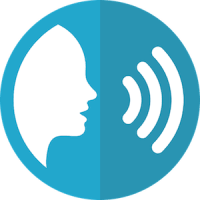Use of wearable devices such as smartwatches, wristbands, remote sensors, medical devices and the like makes it easier for individuals to track their health and fitness. Moreover, wearables can transmit data that provider organisations can use in monitoring patient conditions and adherence to medication. Since this kind of connectivity and data transmission is largely dependent on wireless signals, sensitive health data is vulnerable to security risks.
What about using the human body itself to transfer and collect information? This area of research is known as human body communication (HBC). This method, as its name suggests, uses the human body to transmit power and data, very much like the internet. Notably, HBC is a smaller and closed network, offering the benefit of being more secure and power efficient, according to a recent study published by a team of Japanese researchers.
Wearable devices – from smart watches to implantables – interact with the human body in ways that are very different from those of a computer. However, they both use the same protocols to transfer information, making them vulnerable to the same security risks, the Japanese researchers point out. In their study, the researchers analysed how human body communication can make data networks safer and more efficient. HBC technology uses electrodes instead of antennas to couple signals to the human body. This can be used to conduct an electric field from a transmitter to a receiver, and thus to communicate data.
Although HBC receivers work very similarly to radio frequency receivers, the researchers say determining their input impedance is quite a challenge. Two factors – the arrangement of electrodes and the distance between the transmitter and the receiver – needed to be considered in overcoming this difficulty. These factors affect the output impedance and the equivalent source voltage of the system, ultimately having an impact on the received signal power, explain the researchers. The signal emanates from the transmitter electrode and goes through the human body. The body's conductivity couples the field to the environment and this serves as the return path for the transmitted signal, add the researchers.
To better understand how these characteristics of human body communication can be improved, the research team, led by Dr. Dairoku Muramatsu of the Tokyo University of Science and Mr. Yoshifumi Nishida of the University of Tokyo, created an equivalent circuit model of the signal transmission that goes from the body to an off-body receiver through touch. The signal electrodes of both the transmitter and the receiver, as well as the ground electrode of the transmitter, were attached to the body. The ground electrode of the receiver was left "floating" in air. This was unlike other contemporary HBC configurations, in which both ground electrodes are left floating in air, the researchers note.
Through the experimental model, the research team found that impedance increases with increasing distance between the transmitter electrodes. Interestingly, they also found that the size of the receiver ground was another factor that affected transmission. They report that capacitive coupling between receiver ground and human body increases as the former gets larger.
In summary, the HBC is "safer and more secure" because it uses a lower-frequency signal that is sharply attenuated depending on the distance. The closed nature of the transmission results in lower interference and higher reliability, and, therefore, more secure connections, the researchers explain, adding that having the device interact directly with the body means that it has reliable biomedical applications.
"However, one major drawback of HBC is that it cannot be used for high-speed data communication. Thus, the focus should be on applications of HBC that transmit relatively low-capacity data, such as authentication information and biomedical signals, for long periods with low power consumption," Dr. Muramatsu and Mr. Nishida point out.
Source: Tokyo University of Science
Image credit: Pixabay
Reference Nishida Y et al. (2019) Equivalent Circuit Model Viewed from Receiver Side in Human Body Communication. IEEE Trans. Biomed. Circuits Syst. (Early Access) 1940-9990 DOI: 10.1109/TBCAS.2019.2918323
Latest Articles
Research, Safety, mhealth, Healthcare, Data, big data, Networks, HBC, human body communication, TUS, Tokyo University of Science, electrodes
Use of wearable devices such as smartwatches, wristbands, remote sensors, medical devices and the like makes it easier for individuals to track their heal...










